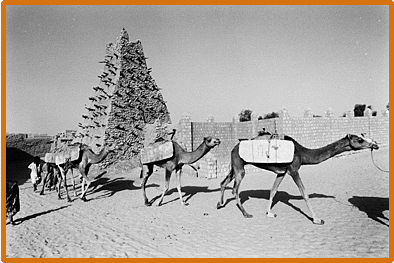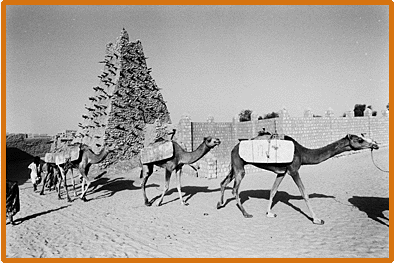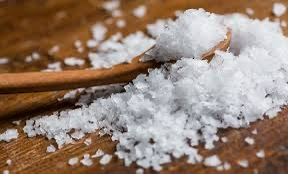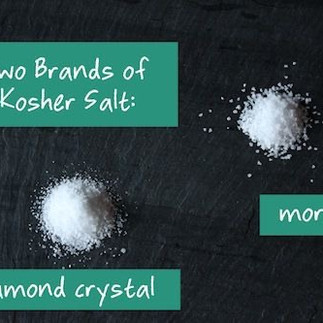Push It Real Good : The Lowdown on Salt
- CarolOfMoon

- May 9, 2024
- 12 min read
You don’t have to know a thing about me to know that, according to the title of this blog, I am a teenager of the 80s.
More specifically a young teenager of the 80s and a young adult of the 90s.
When I sat down to write this blog about the importance of salt throughout history, all I keep coming back to was the all female rap group that came on the hiphop/rap scene from Queens, New York City in 1985– Salt n Pepa.
I’ll give you a minute to reminisce (or to familiarize yourself with the 2021 Grammy Awards Lifetime Achievement recipients, recognizing their lasting impact on the music industry.
Their influence on hip hop/rap scene and beyond is a crucial part of the history of music.
Salt-N-Pepa was known for their empowering lyrics, catchy hooks, and pioneering contributions to hip-hop music. They were influential in breaking down barriers for women in rap and were among the first female rap artists to achieve mainstream success collaborating across music genres with artists like Sheryl Crowe and EnVogue.
Their music often featured empowering and assertive lyrics, addressing topics such as independence, confidence, and sexual empowerment. Tracks like "Push It" and "Shoop" became anthems for self-assurance and female empowerment.
Salt-N-Pepa openly addressed sexuality in their lyrics, breaking taboos and advocating for sexual liberation. They encouraged women to embrace their sexuality on their own terms, promoting messages of self-confidence and agency.
The group's bold and eclectic fashion sense helped shape the visual aesthetic of hip-hop in the late 1980s and early 1990s. Their distinctive looks, including colorful and avant-garde outfits, influenced fashion trends both within the hip-hop community and beyond.
They are worth their musical success weight in gold, or salt…whichever at the time is more valuable.
Now… Drum roll please…
…let’s talk about salt, baby….
(I had to do it!)
The History of Salt
Rich and fascinating, spanning thousands of years and touching nearly every aspect of human civilization, salt is vital for existence not only for bodily functions but also monetarily.
Even Jesus Christ knew salt was important as he described his disciples as such in Matthew 5:13. I’m sure it’s a testament to their importance of spreading His Word; I just can’t speak to scripture with any sort of intelligence as I’ve never truly studied it. Even as a Roman Catholic.
Some of the earliest methods of salt production involved evaporating seawater to obtain salt crystals, a process known as solar evaporation. Salt was also mined from underground salt deposits, such as those found in salt domes or salt pans.
Humans developed various techniques for salt extraction and refinement, including boiling brine, mining underground salt deposits, and evaporating seawater in salt pans. These methods have been refined and adapted throughout history, leading to the diverse range of salt production methods used today.
Salt Trade Routes
Salt has been used since ancient times for preserving food and enhancing flavor. It’s history stretches back to prehistoric times when early humans discovered its preserving properties. Ancient civilizations such as the Egyptians, Greeks, and Romans valued salt highly. In fact, Roman soldiers were sometimes paid in salt, leading to the phrase "worth one's salt." This practice is where the word "salary" is believed to have originated from (Latin: salarium). This practice underscores the importance of salt as a commodity and its role in the Roman economy.
Africa's role in the salt trade has been significant, shaping economic, cultural, and social dynamics within the continent and beyond. Salt continues to be an important commodity in Africa, with traditional salt production methods coexisting alongside modern industrial processes.
Africa is home to numerous natural salt deposits, including salt pans, salt lakes, and salt mines. These resources have been utilized for salt production for centuries, providing a steady supply of salt for local consumption and trade.
The geographic location of Africa along major trade routes, such as trans-Saharan trade routes and maritime trade routes along the coast, made it a key player in the global salt trade. Salt was transported across land and sea, connecting Africa with other regions and facilitating trade exchanges.
The trans-Saharan trade routes facilitated the exchange of goods, including salt, between North Africa and sub-Saharan Africa. Salt was a valuable commodity in the arid regions of the Sahara desert, where it was used for preserving food, seasoning dishes, and as a form of currency. The trade of salt played a crucial role in the economic and cultural exchanges between North Africa, West Africa, and beyond.
Salt held cultural significance in many African societies, often symbolizing wealth, purity, and hospitality. It was used in religious rituals, traditional ceremonies, and as a means of social exchange and reciprocity.
African salt production contributed to the broader global salt trade, supplying salt to markets in Europe, Asia, and beyond. African salt was valued for its quality and purity, making it sought after in international trade networks.
At times salt was often as valuable as gold. It was used as currency in some cultures and played a crucial role in the economy. Mesopotamians recognized its value for preserving food and used it for rituals, medicine, and trade.
This is a great excerpt from Smithsonian Education about the trading of salt.
Trading Gold for Salt
If you could choose between a pile of salt and a pile of gold, you would probably choose the gold. After all, you know that you can always buy a container of salt for about forty-five cents at the local supermarket. But what if you could not easily get salt, and without it you could not survive? In fact, throughout history salt has been very difficult to obtain in many parts of the world, and people feared a lack of salt the way we in the industrialized world fear a shortage of fuel oil.
Once cultures began relying on grain, vegetable, or boiled meat diets instead of mainly hunting and eating roasted meat, adding salt to food became an absolute necessity for maintaining life. Because the Akan lived in the forests of West Africa, they had few natural resources for salt and always needed to trade for it. Gold, however, was much easier to come by. Every Akan knew how to find tiny grains of gold sparkling in the river beds after a rainfall. The people who lived in the desert of North Africa could easily mine salt, but not gold. They craved the precious metal that would add so much to their personal splendor and prestige. These mutual needs led to the establishment of long-distance trade routes that connected very different cultures.
Camel caravans from North Africa carried bars of salt as well as cloth, tobacco, and metal tools across the Sahara to trading centers like Djenne and Timbuktu on the Niger River. Some items for which the salt was traded include gold, ivory, slaves, skins, kola nuts, pepper, and sugar.
The full excerpt can be find here:
https://smithsonianeducation.org/educators/lesson_plans/currency/essay2.html#:~:text=Camel%20caravan. I found it fascinating
In ancient China, salt was also highly valued and controlled by the government. Salt monopolies were established, and heavy taxes were imposed on its production and trade. Salt was not only used for preserving food but also for seasoning and medicinal purposes.
During these periods and in these regions, salt was indeed considered as valuable as gold, if not more so, due to its essential role in food preservation, trade, and economic stability.
what are the health benefits of salt
In the Middle Ages, salt production became a major industry in Europe. Cities such as Venice and Genoa grew wealthy from the salt trade leading to the development of trade routes and the establishment of salt mines. In some cases, governments even established salt monopolies to control production and taxation.
European exploration and colonization expanded the salt trade globally. Salt was essential for preserving food on long sea voyages, and colonies were established in salt-rich areas to ensure a steady supply.
The Industrial Revolution brought innovations in salt production, such as the use of steam power and mechanization. This led to increased salt production and lower costs, making it more accessible to the general population.
Today, salt is readily available and inexpensive, but it remains a crucial component of the food industry. It's used not only for seasoning but also for food preservation and processing.
Salt has held immense cultural significance throughout history. It's been tied to religious rituals, such as in Judaism where it's used in purification rites, or Hinduism where it's offered during ceremonies. In various cultures, salt has symbolized purity, hospitality, and friendship.
Today’s Consumption
While salt remains essential for food preservation and flavoring, modern society faces challenges related to its consumption.
Excessive salt intake has been linked to health issues like high blood pressure and cardiovascular disease. Efforts to reduce salt consumption include public health campaigns, food labeling regulations, and industry reformulation. Processed foods are loaded with hidden sodium which is also contributing to the abuse of this valuable resource.
Salt, specifically sodium chloride, is essential for various bodily functions, but it's important to consume it in moderation. Here are some health benefits of salt.
Electrolyte Balance: Salt helps maintain the balance of electrolytes in the body, including sodium and potassium. These electrolytes are crucial for nerve function, muscle contractions, and fluid balance.
Hydration: Sodium plays a role in regulating fluid balance in the body. Consuming salt helps ensure that cells retain the right amount of water, which is essential for staying hydrated.
Nerve Function: Sodium is involved in transmitting nerve impulses throughout the body. It helps neurons communicate with each other and enables various bodily functions, including muscle movement and cognition.
Digestion: Salt stimulates the production of saliva and gastric juices, which aid in the digestion of food. It also enhances the flavor of food, making it more palatable and stimulating appetite.
Blood Pressure Regulation: While excessive salt intake can raise blood pressure in some individuals, salt also plays a role in regulating blood pressure. It works in conjunction with other minerals like potassium to maintain healthy blood pressure levels.
Nutrient Absorption: Salt is involved in the absorption of certain nutrients in the small intestine, including glucose and amino acids. It helps facilitate the transport of nutrients across cell membranes.
Iodine Source: Iodized salt, which is salt fortified with iodine, provides an essential nutrient that is necessary for thyroid function and the production of thyroid hormones. Iodine deficiency can lead to thyroid disorders and other health issues.
It's important to note that while salt offers these health benefits, excessive salt intake can have negative effects on health, including high blood pressure, heart disease, stroke, and kidney problems. The key is to consume salt in moderation and as part of a balanced diet. The recommended daily intake of salt for most adults is about 2,300 milligrams per day, which is roughly equivalent to one teaspoon.
what are some health risks with salt
Cooking Class with Carol
No recipes or food today, class. Just knowledge about the different types of salts, whether they are for pre-seasoning, while cooking or finishing salts, and the taste of different salts.
This knowledge will help elevate the flavor of dishes you prepare.
Start experimenting with salts outside your comfort zone of cylinder shaped, girl with the umbrella type iodized crystals. There is a plethora of different types to choose from.
And taste them! You’ll be surprised how different they all are.
There are several types of salt, each with its own unique characteristics and uses. Here are some of the most common types:
Table Salt: This is the most common type of salt found in kitchens. It's typically finely ground and may contain additives like iodine to prevent iodine deficiency. Table salt is used for general cooking and seasoning.
Kosher Salt: Kosher salt has larger, coarser grains compared to table salt. It's called "kosher" because it's often used in the koshering process of meats. Kosher salt is favored by many chefs for its texture and ability to adhere well to food surfaces.
Sea Salt: Sea salt is produced by evaporating seawater, leaving behind salt crystals. It comes in various textures and colors, depending on where it's harvested. Sea salt often contains trace minerals, which can affect its flavor and color. It's commonly used in cooking, baking, and as a finishing salt.
Himalayan Pink Salt: Mined from the Khewra Salt Mine in Pakistan, Himalayan pink salt is known for its distinctive pink color due to trace minerals like iron oxide. It has a slightly different flavor profile than table salt and is often used as a finishing salt or in decorative salt shakers.
Flavored Salt: Flavored salts are infused with herbs, spices, or other flavorings to enhance their taste. Popular varieties include garlic salt, truffle salt, and smoked salt. They can add depth and complexity to dishes without the need for additional seasonings.
Rock Salt: Rock salt is typically found in large, chunky crystals and is commonly used in ice cream makers and homemade ice packs for its ability to lower the freezing point of water. It's also used for deicing roads and sidewalks during winter.
Pickling Salt: Pickling salt is a fine-grained salt that's free of additives like iodine or anti-caking agents, which can cause cloudiness in pickling brines. It's used specifically for pickling and fermenting vegetables.
Each type has its own distinct flavor, texture, and uses, making them versatile ingredients in cooking and food preservation. And each also have different salinity levels.
How salty is too salty?
Yes, different types of salt can vary in their salinity levels, primarily due to differences in crystal size, shape, and mineral content. Here's how salinity levels can differ across various types of salt:
Table Salt: Table salt typically has a high salinity level, usually around 97-99% sodium chloride. It is finely ground and may contain additives such as iodine and anti-caking agents, which do not significantly affect its salinity.
Kosher Salt: Kosher salt has a similar salinity level to table salt but may have a coarser texture due to its larger crystal size. Despite the larger crystals, kosher salt still has a high concentration of sodium chloride.
Sea Salt: Sea salt can vary widely in salinity depending on factors such as where it's harvested and how it's processed. Generally, sea salt contains around 98% sodium chloride, but it may also contain trace minerals that can affect its flavor and salinity slightly.
Himalayan Pink Salt: Himalayan pink salt typically has a slightly lower salinity level compared to table salt and sea salt. It contains around 95-98% sodium chloride, along with trace minerals like iron oxide, which give it its characteristic pink color and subtle flavor nuances.
Flavored Salt: Flavored salts may have varying salinity levels depending on the type of flavoring added and its concentration. The base salt used will still contribute to the overall salinity of the flavored salt product.
Rock Salt: Rock salt, which is typically used for deicing roads and sidewalks, has a high salinity level similar to table salt. However, its larger crystal size makes it less suitable for culinary purposes.
While the differences in salinity levels among various types of salt may be relatively small, they can still impact the flavor and texture of dishes, particularly in recipes that rely heavily on salt for seasoning. It's essential to consider the type of salt being used and adjust seasoning accordingly to achieve the desired taste.
Uses of Salt During Cooking
Salt is a versatile ingredient in cooking, used for various purposes throughout the cooking process:
Seasoning: Salt is primarily used to enhance the flavor of food by bringing out its natural taste. It acts as a flavor enhancer, making dishes more savory and balanced.
Brining: Brining involves soaking meat, poultry, or seafood in a saltwater solution before cooking. This process helps tenderize the protein, add moisture, and impart flavor. Brining is commonly used for items like turkey, chicken, and pork chops.
Curing: Salt is used in curing processes to preserve food, such as meats (e.g., bacon, ham, or salami) and fish (e.g., gravlax or salted cod). The salt draws out moisture from the food, creating an inhospitable environment for bacteria and pathogens.
Boiling: Salt is often added to water when boiling pasta, grains, or vegetables. It helps season the food during the cooking process, enhancing its flavor. Additionally, salt raises the boiling point of water, which can help cook food more evenly and quickly.
Seasoning during Cooking: Salt can be added to dishes as they cook to layer flavor throughout the cooking process. This allows the salt to penetrate the food and infuse it with flavor.
Finishing: Salt is commonly used as a finishing touch to dishes just before serving. This allows for precise seasoning, as the cook can adjust the salt level based on taste. Finishing salt can add texture and a burst of flavor to dishes like salads, grilled meats, or roasted vegetables.
Preservation: In addition to curing, salt is used in various preservation methods, such as pickling and fermenting. Salt inhibits the growth of harmful bacteria, allowing foods to be preserved for longer periods without spoiling.
What’s my go to salt? I have two.
Diamond Crystal Kosher Salt -cooking
Maldon Salt - finishing

Diamond Crystal Salt (DCS) is known for its high-quality salt products, which are sourced from natural salt deposits and processed using advanced techniques to ensure purity and consistency. The brand is popular among consumers and food industry professionals for its reliable performance and versatility in cooking and food preparation.
One of the distinguishing features of DSC is its unique shape and texture. The crystals are formed in a distinctive shape that allows them to dissolve quickly and evenly, making them ideal for both cooking and seasoning.
Diamond Crystal Kosher Salt, in particular, is prized by chefs for its large, irregular crystals, which adhere well to food surfaces and provide a satisfying crunch when used as a finishing salt.
Typically, DCS has a salinity level comparable to other types of table salt, which is around 97-99% sodium chloride. However, specific information about the exact salinity level of Diamond Crystal Salt may not be readily available, as it can vary slightly depending on factors such as production methods and processing techniques. Generally, Diamond Crystal Salt is considered a high-quality salt product with consistent salinity levels suitable for culinary use.
Maldon Salt is a type of sea salt that is harvested in Maldon, a town located in Essex, England. It is known for its distinctive pyramid-shaped crystals and flaky texture. Maldon salt is hand-harvested using traditional methods that date back over 100 years.
One of the defining characteristics of Maldon salt is its delicate flavor and crunchy texture, which make it a popular finishing salt for a wide range of dishes. It is often used to add a final touch of flavor and texture to dishes such as grilled meats, salads, roasted vegetables, and desserts.
Maldon salt has gained popularity among chefs and home cooks for its high quality and unique taste. It is prized for its ability to enhance the flavor of food without overpowering it, making it a versatile and beloved ingredient in kitchens around the world.
Who knew there was this much difference in salt? Have fun with it and try your tastebuds to different varieties.
Enjoy!



























Looking for high-quality e-liquids? Check out the best Vape Juice Canada Online for premium flavors and smooth vaping experience!
Looking for the best deals? Try this Edmonton Vape Shop Online for all your vaping needs.